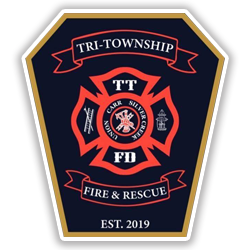State Burn Laws
Learn more about Indiana Burn Laws - Rule 326, Chapter 4
Quick Links
Open Burning - Definition
is defined as the burning of any materials wherein air contaminants resulting from combustion are emitted directly into the air, without passing through a stack or chimney from an enclosed chamber
Recreational or Ceremonial Fires (e.g., scouting activities, campfire cooking)
RULE: 326 IAC 4-1-3(c)(1)
- Recreational or ceremonial fires are allowed in all counties except when prohibited by a local ordinance.
- Burning cannot be used for disposal purposes. If burning for disposal purposes, please refer to the Residential Open Burning section below.
- Only burn clean wood, paper, charcoal, and clean petroleum products.
- Never burn trash!
- Limit the volume of clean wood material to be burned to less than 1,000 cubic feet.
- If your pile is bigger than 125 cubic feet, provide the date, time, and location to the local fire and health departments at least 24 hours before burning.
- Only burn one pile at a time.
- Never burn within 500 feet of any fuel storage area or pipeline.
- Do not burn during high wind conditions or temperature inversions, when air is stagnant, or when an Air Quality Action Day has been declared (see IDEM’s SmogWatch page for alerts).
- Do not ignite a fire more than 2 hours before the activity takes place.
- Fires must be attended at all times and extinguished upon conclusion of the activity.
- Adequate firefighting equipment, such as a water hose, buckets of water, fire extinguisher, and/or shovels, must be kept on-site while burning.
- Fires must be extinguished if at any time they are causing a pollution problem, a threat to public health, a nuisance, or a fire hazard.
Residential Open Burning
RULE: 326 IAC 4-1-3(c)(2)
Residential open burning is the burning of leaves, brush, paper, and other clean wood waste in a burn barrel at a private residence.
It is not allowed:
- At apartment/condominium complexes, mobile home parks, and buildings with five or more dwelling units.
- In Clark, Floyd, Lake, or Porter counties due to federal requirements for controlling ground-level ozone pollution.
- In cities or counties with a local ordinance banning the activity.
If residential open burning is allowed at your place of residence:
- Do not burn during high wind conditions or temperature inversions, when air is stagnant, or when an Air Quality Action Day is declared (see IDEM’s SmogWatch page for alerts).
- Limit burning to daylight hours and stay with the fire at all times.
- Only burn clean wood products such as untreated or unpainted lumber, clean brush and leaves, and uncoated paper.
- Never burn trash!
- Use a noncombustible container (i.e., burn barrel) with enclosed sides and a bottom that is sufficiently vented to induce adequate primary combustion.
- Fires must be extinguished before sunset.
- Adequate firefighting equipment, such as a water hose, buckets of water, fire extinguisher, and/or shovels, must be kept on-site while burning.
- Fires must be extinguished if at any time they are causing a pollution problem, a threat to public health, a nuisance, or a fire hazard.
Burning for Maintenance Purposes
RULE: 326 IAC 4-1-3(c)(3)a
Burning for maintenance purposes includes managing:
- Vegetation from farms, orchards, nurseries, tree farms, cemeteries, drainage ditches, and agricultural land in an unincorporated area.
- Wood that is pruned or cleared from a roadside by a county highway department or the initial clearing of a public utility right of way in an unincorporated area.
- Undesirable wood structures on real property or wood remnants of the demolition of a predominantly wooden structure originally located on real property in an unincorporated area. Houses or commercial structures are typically not considered a predominantly wood structure.
When burning for maintenance purposes:
- Do not burn during high wind conditions or temperature inversions, or when air is stagnant.
- Attend fires at all times, until the burning is completely extinguished.
- Remove all asbestos-containing materials from a structure before burning it. IDEM’s Asbestos site covers asbestos requirements.
- Never burn asbestos-containing materials.
- Never burn regulated solid waste including household trash, painted or treated wood, or waste tires.
- Extinguish the fire any time it creates a nuisance or fire hazard.

